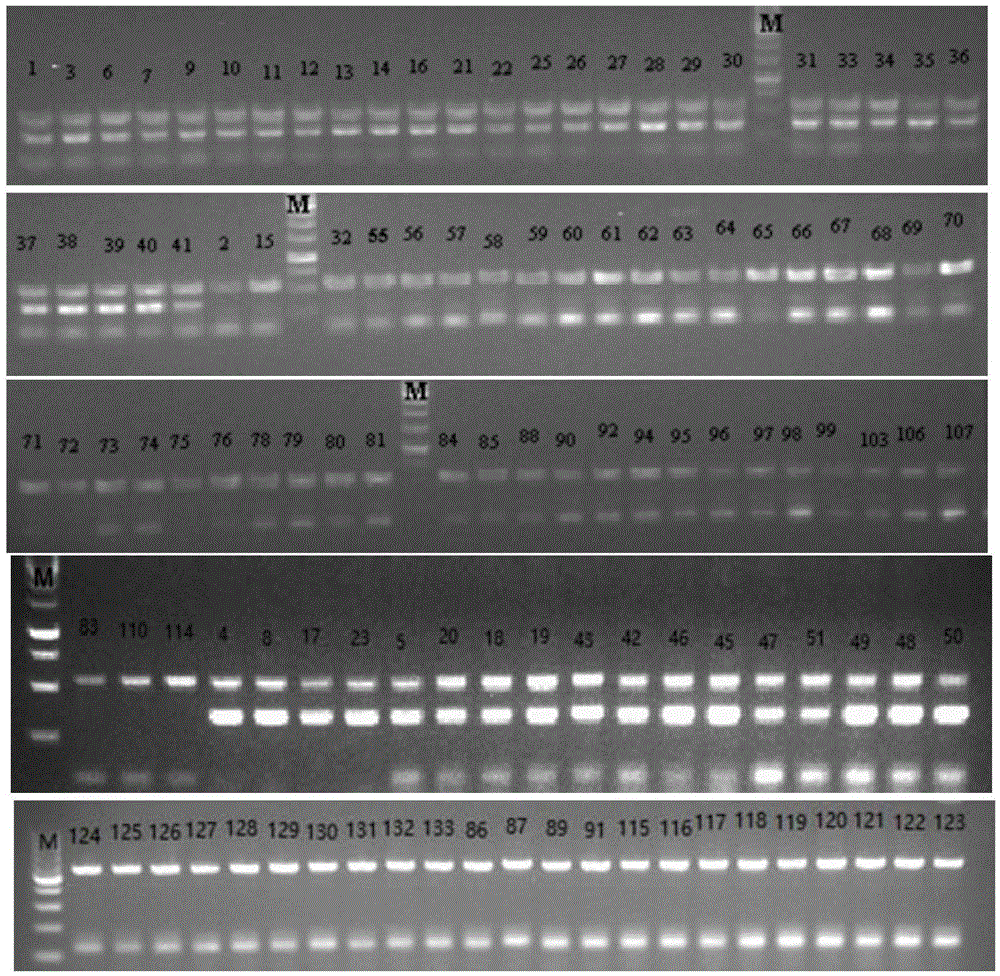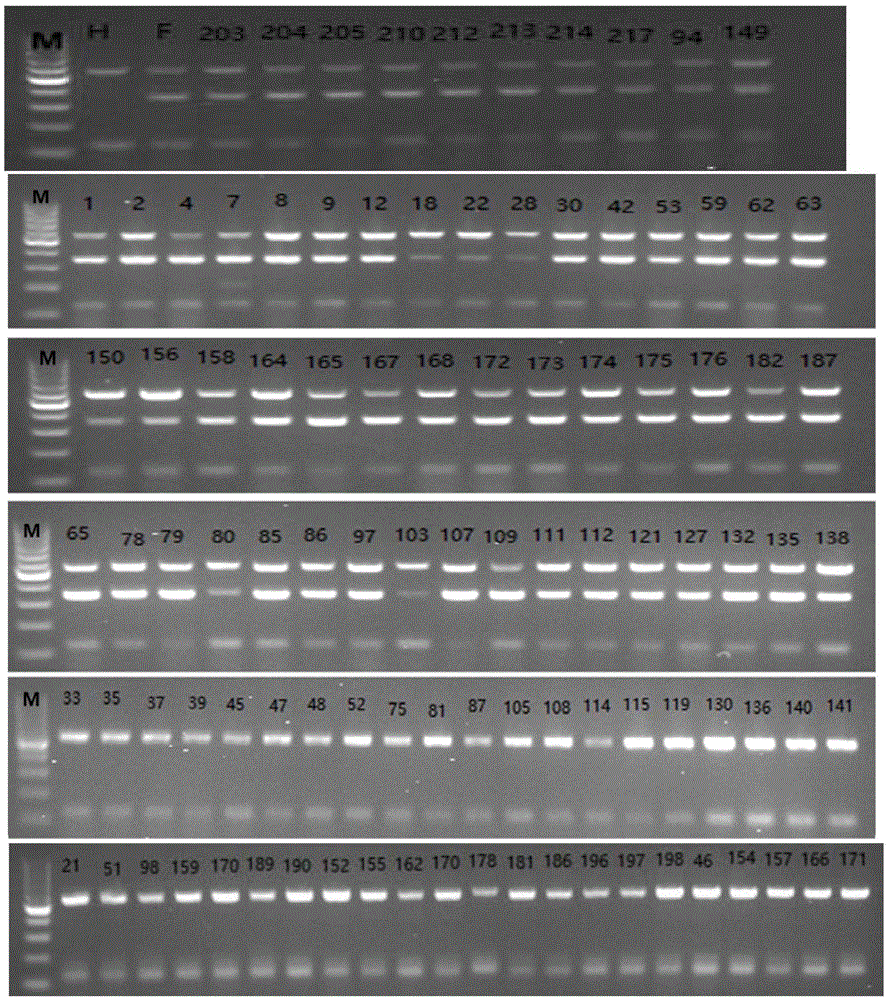Co-dominance InDel molecular marker for identifying single embryo and multiple embryos of citrus and application thereof
A molecular marker, co-dominant technology, applied in the field of citrus genomics, can solve the problems of laboriousness, low accuracy, slow progress, etc., and achieve the effects of improving breeding efficiency, low cost, and early time.
- Summary
- Abstract
- Description
- Claims
- Application Information
AI Technical Summary
Problems solved by technology
Method used
Image
Examples
Embodiment 1
[0052] Example 1 Identification of single polyembryos of 115 natural population materials such as tangerine, pomelo, and orange
[0053] 1. Preparation of genomic DNA of tangerine, grapefruit, orange, citrus, lemon and other citrus
[0054] In this example, the improved CTAB method was used to extract the genomic DNA of tangerines, grapefruits, oranges, citrus, lemons and other citrus; 2. Using primers to CKF / R, INSF / R and DelF / R amplification analysis of all the above Citrus genomic DNA;
[0055] The above primer pairs are:
[0056] Primer pair CKF / R
[0057] Forward primer 5'-CGTTCTTCAGACCCTTTCAG-3',
[0058] Reverse primer 5'-TGTCCTTTGTCCCATCCTTC-3';
[0059] Primer pair INSF / R
[0060] Forward primer 5'-GTATCCTAAAAATATAATCTTTATG-3',
[0061] Reverse primer 5'-ATCAATTTGTCCTTTGTCCC-3';
[0062] Primer pair DELF / R
[0063] Forward primer 5'-CAAAGATTATTATTGATATGGGAAAG-3',
[0064] Reverse primer 5'-CCTCGATGTACCTAACGATT-3'.
[0065] The PCR reaction system is as follows: 7μl PCRMix (purchased f...
Embodiment 2
[0067] Example 2 Identification of single polyembryos of the hybrid offspring of 100 HB pomelo and Fairchild tangerines
[0068] 1. Preparation of genomic DNA of 100 hybrids of HB pomelo and Fairchild tangerine
[0069] In this example, the improved CTAB method was used to extract the genomic DNA of the hybrid progeny of HB pomelo and Fairchild tangerine 100 strains.
[0070] 2. Using the above primer pairs CKF / R, INSF / R and DelF / R to amplify and analyze the genomic DNA of all the above citrus.
[0071] The PCR reaction system is as follows: 7μl PCRMix (purchased from Hubei Jingmao Company), 100ngDNA, forward and reverse primers (synthesized in Shenggong) each 0.2μM, ddH 2 O was added to the final volume of 15ul. The thermal cycling parameters are: 95°C for 5min; 95°C for 30sec, 58°C for 30sec, 72°C for 45sec, 35 cycles; 72°C for 10min, 1 cycle; 4°C storage, the reaction is completed on the S1000ThermalCycler PCR instrument. The amplified products were detected by 1.0% agarose gel el...
PUM
 Login to View More
Login to View More Abstract
Description
Claims
Application Information
 Login to View More
Login to View More - R&D
- Intellectual Property
- Life Sciences
- Materials
- Tech Scout
- Unparalleled Data Quality
- Higher Quality Content
- 60% Fewer Hallucinations
Browse by: Latest US Patents, China's latest patents, Technical Efficacy Thesaurus, Application Domain, Technology Topic, Popular Technical Reports.
© 2025 PatSnap. All rights reserved.Legal|Privacy policy|Modern Slavery Act Transparency Statement|Sitemap|About US| Contact US: help@patsnap.com



